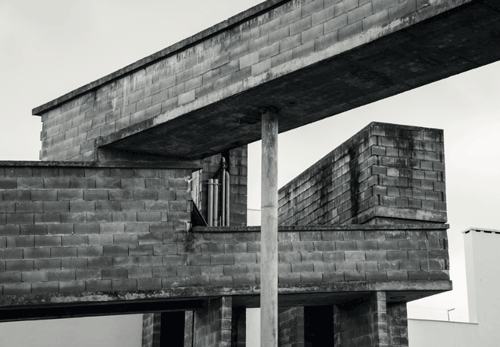
POSITION
Unit One is set apart by a focus on spatial relationships and a fascination with the experience of physical form.
We are interested in the incredible qualities of space, the poetic moments and the tensions of time and place created by the constructions that de ne our cities. These urban conditions develop and morph over time, continually changing and creating new situations, spaces and in-between spaces which directly affect the experience and use of the civic landscape.
The Unit works to reveal these forms through re ned creative studies and the use of the resulting interpretations to establish the basis of new design languages. Through this practice we place special value on the craft of constructing thoughtful drawings and models; making things with real care to explore places and ideas in depth.
This year we will be exploring the relationship of the civic and personal in the city. How can we design our buildings to contribute to the shared ground of the city, to opportunities for celebration, gathering and protest, while also providing private refuge, shelter and comfort. We want to question how buildings can become activators for social interaction and provide a backdrop for new forms of domesticity. How do our cities need to adapt to the changing patterns of people’s lives?
PROCESS
Creatively exploring the distinct qualities of precedents is critical to Unit 1’s methodology. This year we will be examining buildings that form the edges of public space in the city and investigating private dwellings that have clearly de ned relationships with the urban commons. The way these personal architectures were designed, through their form, detail, materiality, proportion and colour, have a direct impact on the use of the public space they de ne. The transitional spaces and relationships between inside and outside form thresholds of various scales, from the entrance to a dwelling and the street, to the frontage of an urban block and the city.
Alvaro Siza, Quinta da Malagueira
We will investigate how built space and the relationships created between inside and outside result in transitional and threshold spaces; and how they resolve themselves both at macro and micro scales. As well as the physical we are interested in understanding how the character of a place is in uenced by its history and how unique facts and ctions help to develop a local identity. We will interpret and re ect on urban conditions as a way of developing a new design language to make propositions that suggest new ways that architecture can support both communal and private lives with powerful new forms.
Unit One will be a platform for testing, with specialised skills and techniques developed through workshops. This year we are interested in exploring new forms of representation that combine physical & 3D modelling, photography, orthogonal drawing and collage (both analog and digital).
ONE PROJECT
Each student will make a portfolio that represents one single research project. This project will take the form of design exploration conducted through studies of urban and domestic spaces, with the resulting ideas summarised in the detailed design of an interior, together with a resolved piece of building design that fully engages with its context and expresses the unique language developed by each student.
PART 1 – THRESHOLD
“The oor or ground at the bottom of a doorway, considered as the entrance to a building or room”
“A transitional interval beyond which some new action or different state of affairs is likely to begin or occur.” “A window or doorsill.”
“The place or point of beginning; the outset.”
To begin our journey and the rst step towards the creation of our new languages, each student will be asked to explore the material and immaterial qualities of one of London’s 300 squares in search of the in-between. Students will make composite orthogonal drawings of their experiences, using experimental drawing techniques, overlay and projections as well as material augmentation and careful editing to help interpret the spaces between and the thresholds left behind. In parallel, students will investigate a precedent of a house that succeeds in forming both a rich internal refuge and an exterior expression that de nes the qualities of the space to which it offers an edge.
We will use the languages and ideas developed in these investigations to design an interior through making, exploring only the internal space and the views from its apertures. The programme for the inhabitable space will evolve from a material quality, detail, observation, ction or immaterial aspect from the site.
The models from Part 1 will become tools for testing and surveying our new forms to produce a drawing that makes explicit the relationship of the interior with its surroundings.
PART 2 – THE LIVED CITY / A NEW BETWEEN
Whitechapel is our site for the main building investigation. We will transplant the interior from Part 1 to a site in this rapidly evolving area of the city, where it will form the nucleus of a sophisticated new building proposition.
Porto will be our site of inspiration and a chance to develop further our skills at reading spaces. Travelling through the canon of Portuguese buildings we will explore how the public and private lives of the city interweave in a different way to London.
Initially we will work at scales of 1:500 and 1:5. We will look at ways that the detail can create experiential connections between sites that relate to wider strategies of integration with the city.
Third years will design a proposition to include 3 primary components. Two distinct buildings, one of a dominant scale, and one in a supporting scale, and the space created in between.
Second years will design a single medium scale building, paying particular attention to the spaces it creates between itself and the surrounding city.